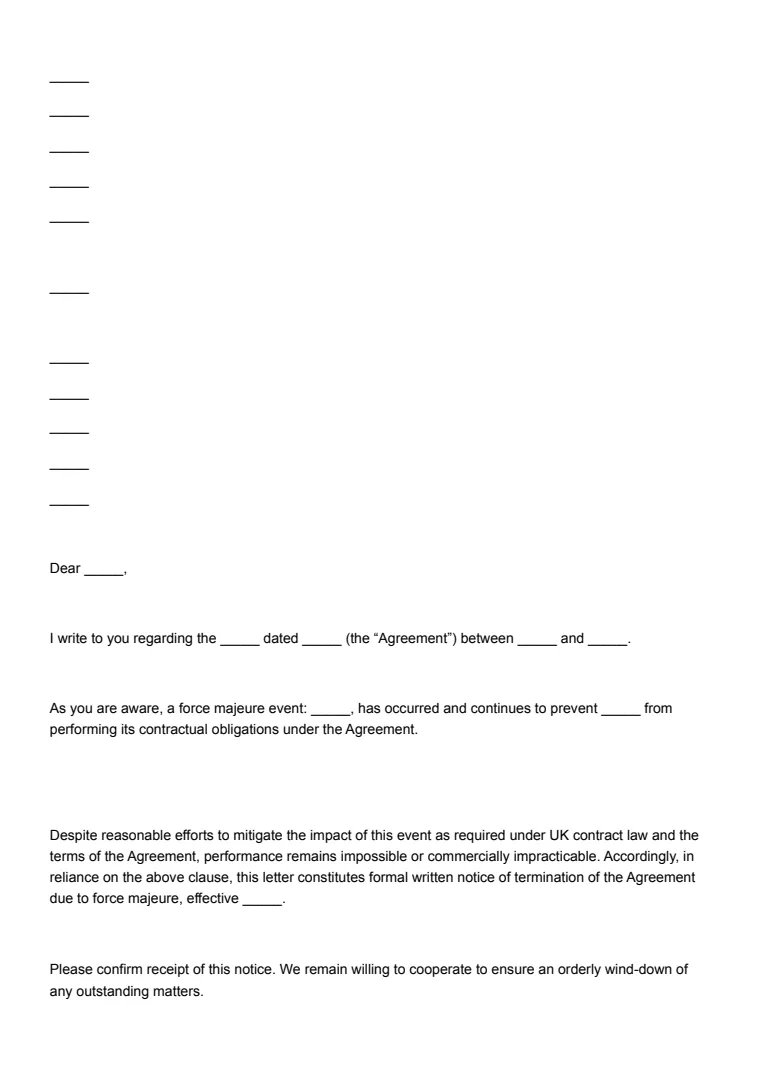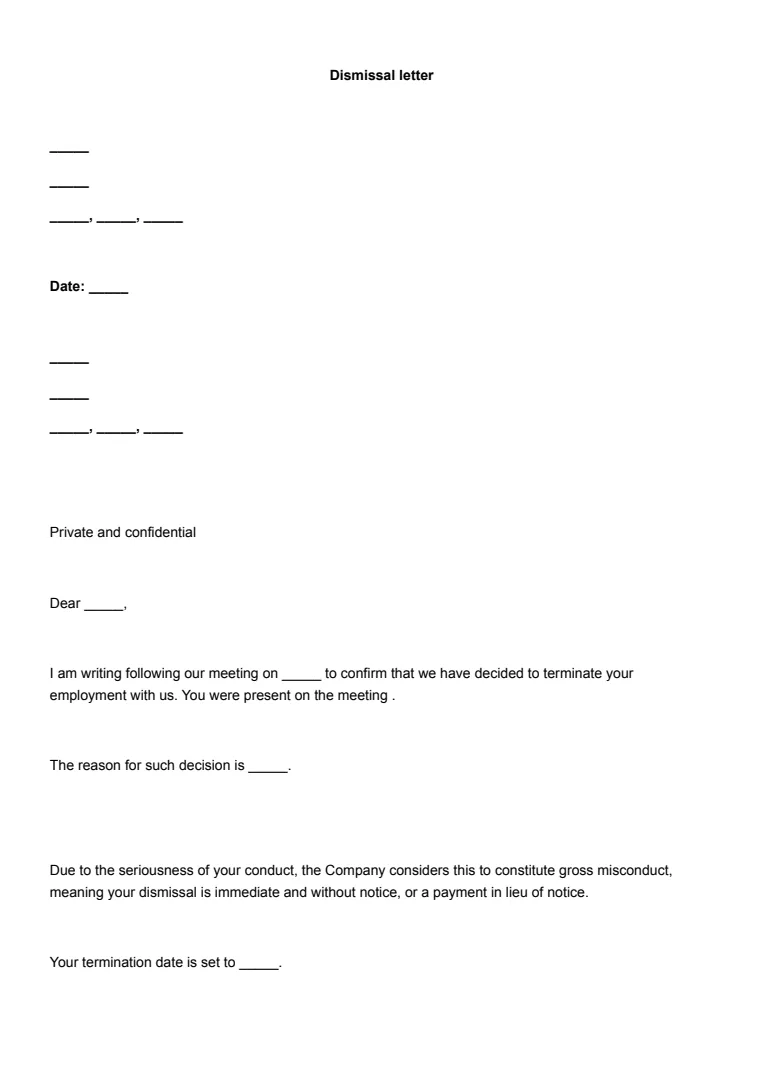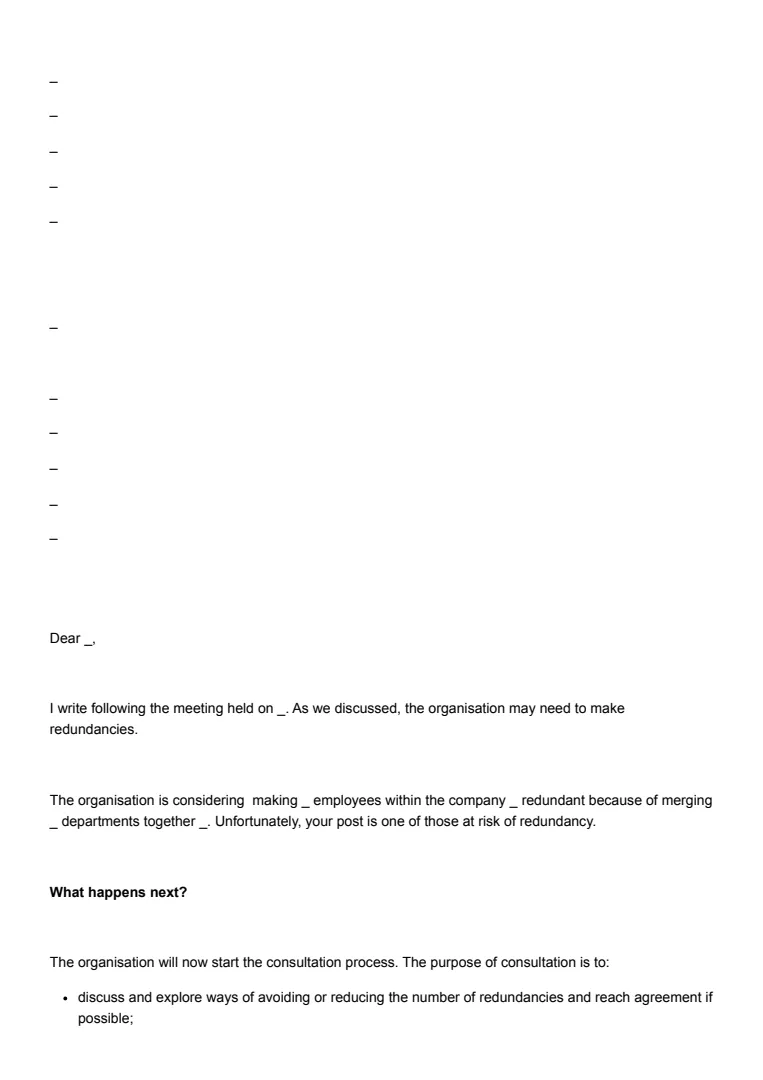What Is a Gross Misconduct Dismissal Letter?
A gross misconduct dismissal letter is a formal document you give to an employee when they’re being dismissed immediately due to gross misconduct.
Gross misconduct means behaviour so serious that it destroys the trust needed for the employment relationship to continue.
You might see gross misconduct cover things like theft, physical violence, serious insubordination, or fraud.
In these cases, employment laws in the UK usually allow you to end employment without notice, known as ‘summary dismissal’.
The letter details the reasons for dismissal and the specific acts of gross misconduct that were involved.
You’ll also include important information, such as the employee’s final working day and any rights to appeal.
The typical contents of a gross misconduct dismissal letter are:
- The reason for dismissal
- A summary of the misconduct
- The date employment ends
- Details about pay and final payments
- Information on how to appeal
Sending this letter is crucial under employment law to clearly document the process and help protect your business in case of any disputes.
Using a clear letter also provides the employee with the necessary information about what happens after dismissal, including details about pay and appeal rights.
When Is a Gross Misconduct Dismissal Letter Needed?
You’ll need a gross misconduct dismissal letter when an employee’s behaviour is so serious that it’s impossible to let them stay, even for their notice period.
This usually arises after a proper disciplinary process, where the facts are clear and the action is justified.
Typical situations of gross misconduct include:
- Theft or fraud
- Violence at work
- Serious breaches of company policies
- Gross negligence or dishonesty
If you’ve finished a thorough investigation and followed your company’s disciplinary procedure, it’s time to issue the letter.
At this point, HR advisors or managers often work closely to ensure you stick to the ACAS Code of Practice and any internal HR policies.
You must always ensure that your process complies with legal obligations.
The letter is necessary only after all key steps, like meeting with the employee and allowing them to provide their side, are complete. This helps minimise any legal or tribunal risks.
Always send the dismissal letter promptly after the decision is made.
This formal document not only explains your decision but also provides essential details, which could protect you in any future disputes.
How to Write a Gross Misconduct Dismissal Letter
It’s essential to include particular information when writing a gross misconduct dismissal letter. To ensure you create a clear and comprehensive letter, follow these steps.
Step 1: Gather All Relevant Documentation
Start by gathering all relevant documentation tied to the dismissal process.
You need accurate records of the misconduct, investigation notes, and any prior correspondence or warnings.
Good documentation helps ensure your letter is clear and lawful.
Step 2: Use a Dismissal Letter Template
Set out the structure of your letter using a straightforward gross misconduct letter template.
Standard elements include the employee’s full name, job title, and an explicit subject line, such as "Termination of Employment: Gross Misconduct".
Step 3: State the Decision and Termination Date
In the opening lines, state the decision to terminate employment and specify that it is due to gross misconduct.
Include the termination date to avoid confusion about when the employment ends.
Step 4: Explain the Misconduct Clearly
Explain what led to this decision by outlining the misconduct, referencing specific events, dates, or policies breached.
It’s essential to maintain a factual tone rather than an emotional one.
Step 5: Describe the Dismissal Process
Detail the steps taken during the dismissal process, like investigations or disciplinary hearings.
If you followed a formal procedure, mention how the process was handled to show fairness.
Step 6: Cover Notice, Pay, and Company Property
Ensure that the employee is informed about any notice entitlements, outstanding pay, and the procedure for returning company property.
Clarify whether the termination is with or without notice, as this affects final pay.
Step 7: Provide Final Instructions and Attachments
Wrap up by providing the employee's contact information in case they have questions, and attach any relevant documentation.
Using a pre-constructed template can help you avoid missing key details and ensure consistency throughout your document.














